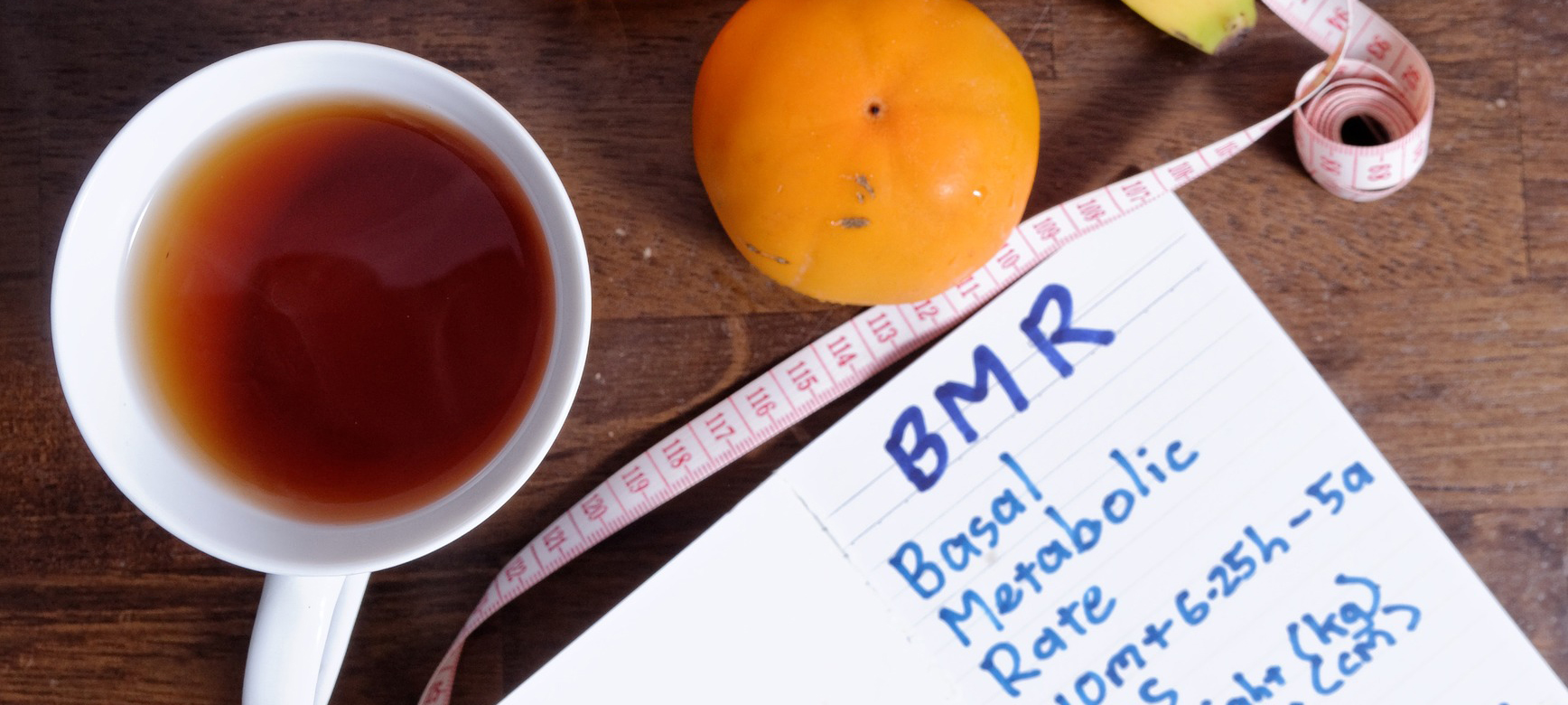
You probably don’t think about your body composition when you’re thinking about your metabolism. But you should.
You probably think about it in terms of speed: “My metabolism is fast” or “my metabolism is slowing down.” If that sounds like you, you’re not alone: simply googling the word “metabolism” yields 4 articles in the top 10 all based around boosting/increasing your metabolism for weight loss.
People are naturally afraid of their metabolism slowing and the weight gain they know comes with it. To some extent, those worries are well-founded.
Metabolism is linked with weight gain and loss because of its a biological process involved with energy and calories.
The Mayo Clinic defines metabolism as:
…the process by which your body converts what you eat and drink into energy. During this complex biochemical process, calories in food and beverages are combined with oxygen to release the energy your body needs to function.
Notice how it doesn’t mention anything about the speed you process your food. That would be digestion.
In medical terminology, metabolism is known as your Basal Metabolic Rate (BMR), which is the minimum number of calories your body needs to perform basic bodily functions. BMR is usually expressed in terms of calories. Your Basal Metabolic Rate also has another interesting quality: the more Lean Body Mass (which includes muscle, water, and minerals) you have, the greater your BMR will be.
When we talk about metabolism, we should always start the conversation with how many calories your body needs. But because your BMR and Lean Body Mass are linked, that means any conversation about metabolism becomes a conversation about your body composition.
Your Body Composition Is Linked To Your Metabolism
Why is it that some people seem to be able to eat whatever they want and never experience any weight gain, while other people – even skinny people – feel like whenever they have one bite of dessert it instantly goes to their waistline?
The reason is that metabolism can vary in size.
Take a look at these two body composition profiles, and see if you can spot the difference.


Beyond the obvious differences in weight, the Person A has a much smaller Basal Metabolic Rate than the second. This means Person B needs more calories than Person A in order to provide their body with the necessary energy to function without losing weight. Because the BMR is bigger, the metabolism is “bigger.”
Greater than height and gender, the most important factor playing into BMR is the amount Lean Body Mass each person has. That’s because, as research in the American Journal of Clinical Nutrition states, the more Lean Body Mass you have, the greater your Basal Metabolic Rate will be. That is why strength training for muscle gain, which in turn will increase your lean body mass, is recommended as a way to increase your metabolism.
This is why people who are big or above average in weight can eat more than people who are smaller. Their body literally requires them to eat more to maintain their weight, and specifically – their Lean Body Mass.
OK, you say, but these two people are very different in body weight – of course, the second person will have a bigger metabolism. Take a look at the two people below, who we’ll call “Jane” and “Sarah”, two individuals who are similar body in age, height, weight, and gender.


Despite being similar in age, height, weight, and gender, these two people have very different body composition profiles. As a result, they have different Basal Metabolic Rates. Although Jane has a body weight within the normal range (identified by being near the 100% mark), her body composition is defined by having more fat mass and less lean body mass and skeletal muscle than Sarah.
The person below has a lower body fat percentage and more Lean Body Mass – which is why when looking at this person, you’d describe them as “lean.” Again, because this person has more than 10 pounds more Lean Body Mass, her Basal Metabolic Rate comes out over a hundred calories greater than the person above.
Metabolism and Weight Gain Over Time

Image Source: Flickr
Let’s take a deeper look at what you might call a “slow” metabolism. Far from being an issue of fastness or slowness, weight gain is almost always the result of a caloric imbalance that goes unchecked over a long period of time.
But first, something needs to be clarified – your Basal Metabolic Rate is not the only factor that plays into your overall caloric needs, and it’s not the total amount of calories you need in a day. There are two other major influencers, which are:
- Your energy level – how active you are
- The thermic effect of food – the energy your body uses to digest your food
These taken together with your Basal Metabolic Rate provide your Total Daily Energy Expenditure (TDEE). This is the number of calories your body burns in a day.
BMR is a necessary piece of information to estimate TDEE. Although they’re not exact, equations exist for estimating your TDEE based on your activity level and BMR. These are based on multiplying your BMR with an “activity factor” – a number between 1 and 2 – that increases the more active you are (and decreases when you are less active, regardless of your appetite).
To take a closer look into metabolism and weight gain, let’s take the two people whose body compositions we’ve looked at above, Jane and Sarah, and see what could happen in a real world example and accounting for diet and exercise.
For this exercise, we first need to estimate TDEE for Jane and Sarah, using their BMRs as a guide. Based on Jane and Sarah’s compositions, it would be fair to assume that Jane does less exercise/is less active than Sarah, so we’ll assign an activity level of “Sedentary” for Jane and assign “Lightly Active” for Sarah.

Using these numbers and multiplying it by the appropriate activity factor, we can estimate Jane’s TDEE to be 1573 calories and Sarah’s to be 1953 calories, a difference of 380 calories.
Notice how although the difference in BMR was a little over 100 calories when activity levels are factored in, the difference in actual caloric needs becomes magnified.
Now that we have an estimate of the calories Jane and Sarah will need/burn in a day, let’s give them calories to take in. Let’s put them both on a diet of 1,800 calories a day – the estimated caloric intake suggested by the USDA for sedentary women between the ages of 26-30.
Assuming that Jane and Sarah both follow the 1,800 calorie diet perfectly without any extra, high caloric snacks or treats, Jane would end each day with a calorie surplus of 227 calories/day. Sarah would end each day in a slight calorie deficit of 153 calories a day.
When you are in a caloric surplus – taking in more calories than you use – and live a mostly sedentary lifestyle, you will experience weight gain, specifically, fat. An extra 227 calories a day might not seem like a lot at first – that’s about a single soda -, but over time, a surplus of 227 calories a day becomes 1589 extra calories a week and a surplus of 7037 extra calorie a month: roughly 2 pounds of fat gain per month.

Bottom line: despite being the same height, same gender, similar weight, and similar ages, because of the difference between Jane and Sarah’s body compositions, Jane will experience weight gain over time while Sarah might experience some weight loss (because of her calorie deficit), even though their diets are the same. That’s because the differences in their caloric needs, although seemingly small at first, increase to significant differences when allowed to persist over time.
It’s not about their age or anything else; it’s about their body compositions determining their metabolism/caloric needs.
Making Your Metabolism Work For You

Because your metabolism isn’t something that slows down or speeds up depending on things like age, this actually gives you some control over it. With the correct exercise and dietary plan, you can make your metabolism work for you
- Improve and increase your metabolism
It all goes back to improving and maintaining a healthy body composition.
Because your body needs more energy to support itself when it has more Lean Body Mass, working to increase your Lean Body Mass can actually increase your Basal Metabolic Rate, which can have a huge impact on your TDEE once you factor in your activity level.
- Avoid a decrease in your metabolism
For many people, simply maintaining their metabolism or avoiding a “slowdown” (which as we’ve seen, is a myth right up there with muscle turning into fat) is an important goal.
How can you avoid a decrease of your metabolism?
In short: by maintaining the Lean Body Mass that you already have. That means maintaining your Skeletal Muscle Mass.
Your Skeletal Muscle Mass isn’t the same as your Lean Body Mass, but it is the overall biggest contributor to it. It’s the muscle that you can actually grow and develop through exercise, and increases/decreases in SMM have a strong influence on increases/decreases in Lean Body Mass.

Skeletal Muscle Mass is best developed through strength training and resistance exercise along with a proper diet. A regular exercise plan that includes strength training and resistance exercise will help you maintain your Skeletal Muscle Mass.
This can be especially important as you age. As people become older and busier, activity levels tend to drop and a proper diet can become harder to maintain as responsibilities increase. Poor diet and nutrition can lead to loss of Lean Body Mass over time, which leads to a decrease in overall metabolism – not a slowdown.
- Balance your diet and with your metabolism
The example of Jane is a good example of a well-intentioned dietary plan that doesn’t match the metabolism of the person practicing it.
Even though Jane has been led to believe that 1,800 calories is right for her based on age and gender, her metabolism doesn’t require that caloric intake, and she will end up gaining weight despite her efforts to eat a healthy diet. In the end, she will probably end up blaming her “slowing metabolism.”
It’s examples like Jane’s that show how important understanding the link between metabolism and body composition is.
How much Lean Body Mass do you have? What might your Basal Metabolic Rate be? These questions should be answered first before starting any weight loss or diet program, as well as conversations about metabolism.
The first step is always to get the information you need to get the answers to these questions by getting your body composition accurately tested. Your metabolism and your body composition are strongly linked, so in order to truly understand your metabolism and weight, you must get your body composition tested.


 When most people think about
When most people think about  Many are already aware of the connection between
Many are already aware of the connection between 


















